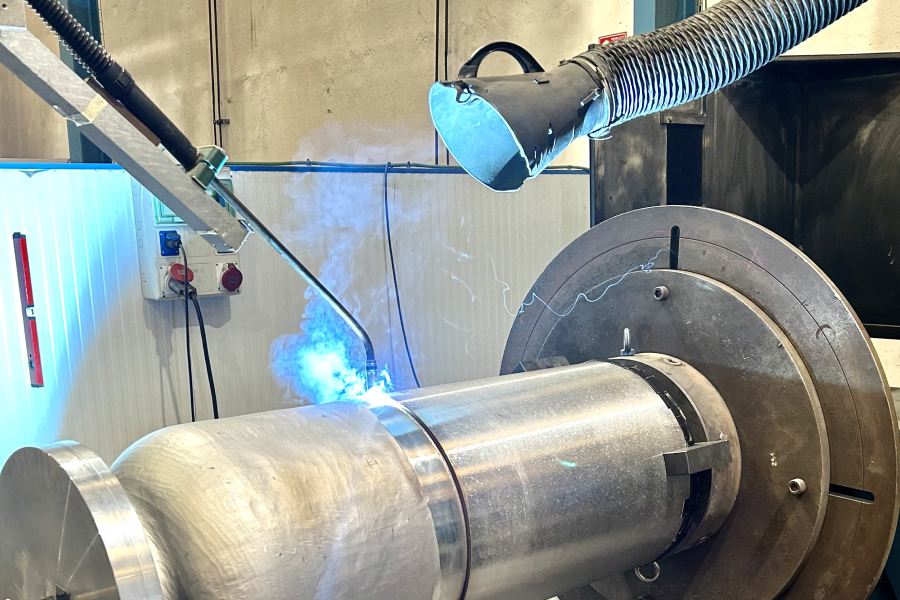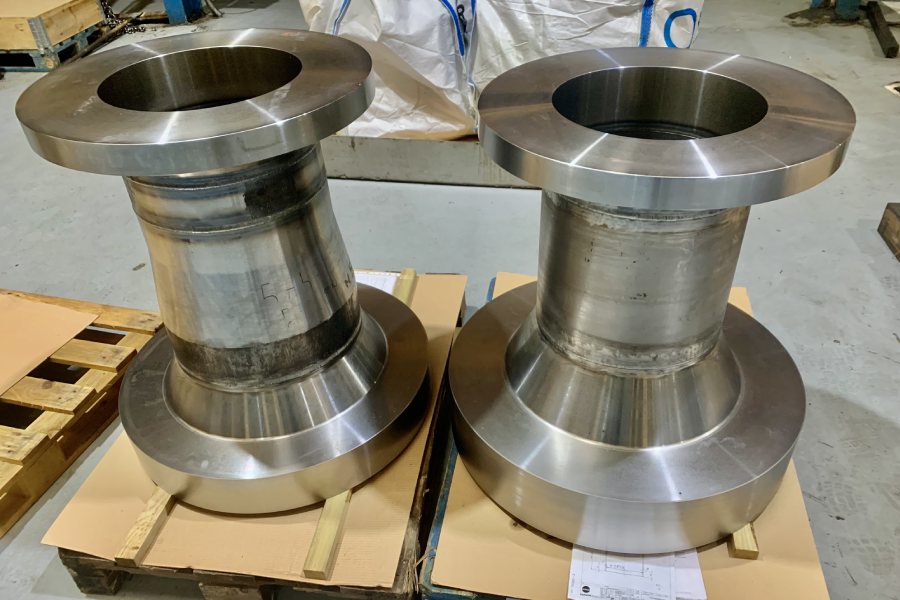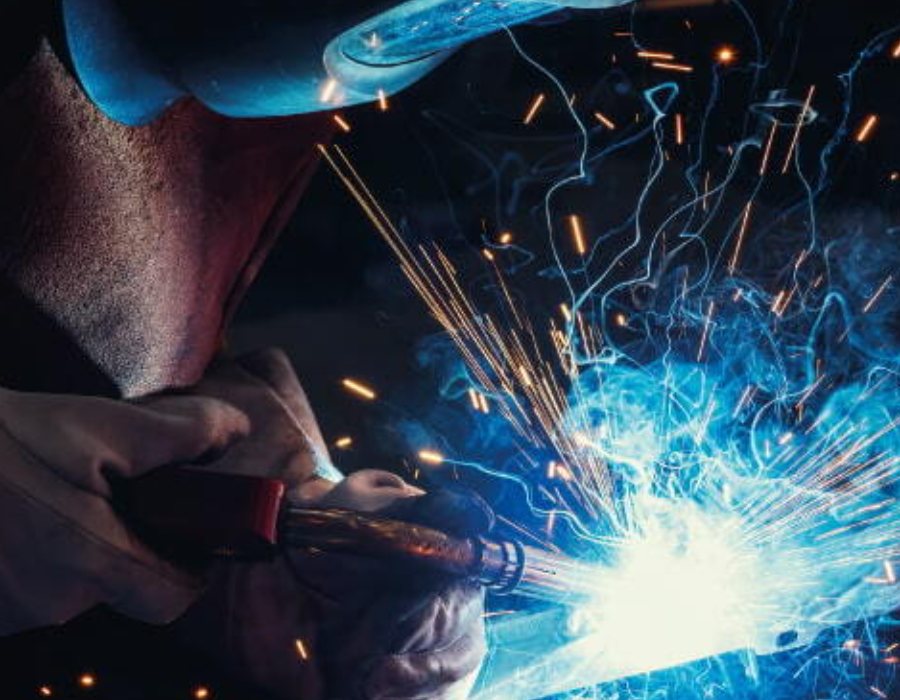Understanding the differences between TIG and MIG welding and their impact on our accuracy machining of industrial pumps and valves is crucial.
In the complex world of precision machining for industrial valves and pumps, welding stands as a vital technique. Two of the most prominent methods in this field are TIG (Tungsten Inert Gas) Welding and MIG (Metal Inert Gas) Welding. To learn more about this topic, we invite you to read our article “TIG Welding: The Cutting-Edge Solution for Manufacturing Industrial Pumps and Valves.”
In this article, we will explore in detail the differences between these two processes, their importance in the industry, and their specific applications.
TIG Welding: Excellence in Precision and Control
At Asimer Group, TIG welding is the preferred method when it comes to ensuring precision and millimetric control in our products. This process allows us to fuse materials with an electric arc generated between a tungsten electrode and the base metal, all while protecting the weld pool with an inert gas. This technique offers clean, high-quality welds, perfect for applications where aesthetics and structural integrity are critical, such as in our pump and valve components.
We specialize in welding components of pumps and valves that require tight tolerances and millimetric precision to ensure optimal performance in demanding industrial environments. TIG welding allows us to achieve these tolerances with its ability to weld thin and delicate materials without causing significant deformations or thermal damage.
MIG Welding: Efficiency and Productivity in Production
On the other hand, MIG welding stands out at Asimer Group for its efficiency and productivity in the mass production of certain standard pump and valve components. This process involves automatically feeding a filler metal wire through a welding gun while protecting the weld pool with an inert gas.
Although MIG welding offers a high deposition rate and unparalleled ease of use, it is not the best choice for our precision machining. At Asimer Group, where quality and precision are our main priorities, we avoid MIG welding in projects that require tight tolerances and attention to detail.
Materials Used in TIG and MIG Welding
TIG welding is more versatile in this regard, as it can be used to weld a wide variety of metals, including stainless steel, aluminum, and titanium. On the other hand, MIG welding tends to be more limited in the types of materials it can effectively join.
Importance of Precision in Machining
In the context of accuracy machining for industrial pumps and valves, the choice between TIG and MIG welding can have a significant impact on the quality and durability of the final product. Precise welding is crucial to ensure the structural and functional integrity of these critical components in various industries, from petrochemical to food manufacturing.
Cost Comparison: Which is the More Economical Choice Between TIG and MIG Welding?
The choice between TIG and MIG welding involves not only technical but also financial considerations. Here is a detailed comparison of the costs associated with these two methods:
Equipment:
- TIG Welding:
Equipment for TIG welding tends to be more expensive compared to MIG welding. This is due to the need for more sophisticated equipment, such as high-frequency power sources, tungsten torches, and inert gas systems.
- MIG Welding:
MIG welding equipment tends to be more affordable, requiring fewer specialized components. However, costs can vary based on the quality and capability of the equipment.
Labor:
- TIG Welding:
TIG welding generally requires higher skill and experience from the welder, which can translate into higher labor costs.
- MIG Welding:
MIG welding is easier to learn and master compared to TIG welding, which can result in lower labor costs.
In summary, although TIG welding may have higher initial costs in both equipment and labor, its precision and quality can justify these additional expenses in projects where structural and aesthetic integrity are critical.


Advantages and Disadvantages of TIG and MIG Welding
Each method has its own advantages and disadvantages. TIG welding excels in precision and cleanliness but can be slower and require more skill from the welder. On the other hand, MIG welding is fast and easy to learn, but may be less suitable for applications requiring high-quality welds.
Discover How TIG and MIG Welding are Applied in the Manufacturing of Industrial Pumps and Valves
TIG and MIG welding find specific applications in the manufacturing of industrial pumps and valves. In the specific realm of industrial pumps and valves, TIG welding is often preferred for applications requiring extreme precision and impeccable aesthetic appearance. For example, in the manufacturing of centrifugal pumps, where corrosion resistance and structural integrity are critical, TIG welding provides superior results. On the other hand, MIG welding may be more suitable for applications where speed and productivity are prioritized over aesthetics, such as in welding flow control valves for the naval industry, where strength and durability are the main requirements.
At Asimer Group, our approach to selecting TIG or MIG welding adapts to the specific demands of various industries, from the oil & gas sector to naval and paper mill equipment production. For projects in the petrochemical, nuclear, or cryogenic applications, we opt for the precision of TIG welding, ensuring structural integrity and resistance to extreme conditions. For solutions in desalination and water and wastewater treatment, we carefully evaluate the needs of each application to determine the best welding technique to guarantee the durability and efficiency of our products.
Here are some common examples:
TIG Welding:
- Joining stainless steel components in sanitary valves for the food and pharmaceutical industries.
- Welding aluminum alloys in submersible pump bodies for marine applications.
- Fabrication of high-precision connections in piping systems for chemical and processing plants.
MIG Welding:
- Assembly of pump and valve housings in high-volume production lines.
- Fabrication of support and reinforcement structures in piping system components.
- Welding of structural elements in pumping equipment for heavy industrial applications.
These examples illustrate how the choice between TIG and MIG welding depends on the specific requirements of each application, including precision, production volume, and materials used.
Safety Considerations in Welding: Protecting Professionals and the Environment in TIG and MIG Welding
Safety is a fundamental concern when working with any type of welding. Here are some safety considerations associated with TIG and MIG welding:
TIG Welding:
- UV Radiation Protection:
TIG welders must use face shields and appropriate personal protective equipment to protect against ultraviolet radiation emitted during the welding process.
- Handling Inert Gases:
Inert gases used to protect the weld pool, such as argon, must be handled and stored properly to avoid risks of asphyxiation or explosion.
- Adequate Ventilation:
It is important to work in well-ventilated areas to avoid the accumulation of gases and vapors during TIG welding.
MIG Welding:
- Fire and Explosion Prevention:
Due to the presence of flammable gases, such as carbon dioxide, measures must be taken to prevent fires and explosions during the MIG welding process.
- Safe Handling of Welding Wires:
Operators must be careful when handling and storing welding wire reels to avoid injuries and equipment damage.
- Protection Against Spatter:
Precautions must be taken to protect against molten metal spatter during MIG welding, which can cause burns and injuries.
By prioritizing workplace safety and following best welding practices, the risks associated with TIG and MIG welding in the manufacturing of industrial pumps and valves can be minimized.
Commitment to Engineering Excellence
In conclusion, at Asimer Group, our choice between TIG and MIG welding is based on the specific needs of each project and our unwavering commitment to engineering excellence. TIG welding allows us to ensure precision and quality in our pump and valve components, while MIG welding offers efficiency and productivity in the mass production of certain standard elements.
Our commitment to precision and quality is never compromised. At Asimer Group, we strive to exceed our customers’ expectations in every project, offering innovative and cutting-edge engineering developments that drive success in the industrial pumps and valves industry.


